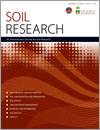SR15377Qualitative and quantitative response of soil organic carbon to 40 years of crop residue incorporation under contrasting nitrogen fertilisation regimes
The long-term effect of crop residue incorporation on soil organic carbon stocks and fractions was investigated in a field experiment in Padua, Italy. After 40 years, only 4% (3.1 Mg ha–1) of the incorporated residue-carbon was retained in the soil with 93% of that carbon being stabilised in the silt and clay fraction. We concluded that aboveground crop residue incorporation was not a significant measure to increase soil carbon storage in the investigated experiment.
SR15377 Abstract | SR15377 Full Text | SR15377PDF (339 KB) Open Access Article




